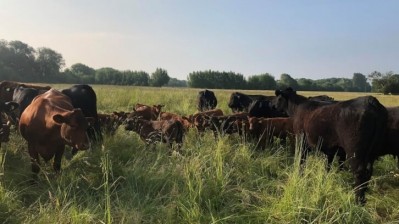Short read
The Food Data Transparency Partnership roadmap explained

For some time, there has been a call for data harmonisation across the sector. Now, with more and more regulation coming to the fore across the globe, including the EUDR and CSRD, this need is ever-more present.
The FDTP update in nutshell
The FDTP paper published today (22 April 2024) draws together evidence, ambitions and priorities on environmental sustainability and is the result of a year’s worth of work.
“[it was] not easy,” a policy official said in a briefing last week, “but I think we have some good momentum now.”
It is important to note that the priorities in the paper are short- to medium-term actions that need addressing. Moreover, the paper does not outline how these will be tackled. Rather its intention is to identify the gaps and divulge how it will be gathering evidence to create an action plan for these areas.
The initial focus has been on greenhouse gas (GHG) emissions where the science and the reporting requirements are most mature. Overall, the ambition is to find a standardised and accurate approach to measurement and sharing for environmental metrics.
The paper notes the important role farmers will play in helping to achieve this, whilst acknowledging that engagement with that industry has been ‘limited to date’. This year, it will be actively looking to improve this, setting up more discussions with the farming sector.
Commenting on the release of the paper, Judith Batchelar OBE, co-chair of the FDTP Eco Working Group said: “This roadmap is the product of a year of close collaboration between government, industry and many stakeholders who have generously shared their time and expertise - I’m delighted to see it published today.
“Our aim is to highlight how food and farming data reporting could be easier and fairer for businesses of all sizes across the supply chain, starting with farmers. This is a crucial step in the sector’s journey towards net zero and giving consumers information they can trust.”
The three priorities
In a nutshell, there are three overarching priorities set out in the paper:
- A common approach to communication, which includes the importance of managing scope 3 emissions in the future.
- The plan for data – i.e. the issues in how primary and secondary impact data is currently managed.
- The capacity for building a system-wide delivery – plugging the data skills gaps and creating a joined up approach.
Scope 3 and nature metrics
A sizeable chunk of the paper is perhaps unsurprisingly dedicated to Scope 3 emissions, due to their complexity and impact.
For many food and drink companies, scope 3 accounts for the majority of their emissions. Moreover, these are currently under review to become a requirement across future UK reporting frameworks.
Moreover, recommendations from the Taskforce on Nature-related Financial Disclosure published in September 2023 may well increase the demand for reporting on nature metrics.
As such, the FDTP paper identifies that we need a standardised approach to scope 3 company level reporting, as well as an approach to company level nature reporting.
One body that is working on specific scope 3 reporting protocols is WRAP, and the FDTP will be collaborating closely with the NGO as it progresses.
The aim is that the WRAP Protocol will be used as the definitive source for food and drink companies to guide their measurement, reporting and action on reducing scope 3 emissions.
Version 1 of the WRAP Protocols were published in May 2022; and it is currently developing version 2, combining implications from recent publications, feedback from the FDTP working groups and results from pilots. This will be available later this year, following a consultation set for early 2024.
Carbon removal
The paper also notes that further research is needed around methodologies and data requirements used for accounting, monitoring and verifying carbon removal.
The draft GHG Protocol’s Land Sector and Removals guidance states that companies shall only report scope 3 land management carbon removals where they have physical traceability to the land management units (farms) where the carbon is stored. This is currently being piloted and the GHG Protocol is considering whether physical traceability to sourcing region should be allowed for scope 3 land management carbon removals.
There are several bodies looking at the certification of carbon removal and reduction in the UK and EU, which the FDTP will be monitoring to ensure international alignment.
Primary and secondary data
As the demand for environmental impact data increases, the FDTP paper also sets out its ambition to level the playing field for farmers who are often asked to report data in different formats to different buyers.
The FDTP want to make sure farmers are appropriately recognised for their efforts and the benefits of better primary data are fairly distributed across the supply chain.
The paper highlights a number of barriers in farmers’ ways to obtain their data, including navigating the crowded landscape of ‘calculator’ tools which offer variable results.
Moreover, the FDTP has noted that some farmers are reluctant to share their data for fears of how it will be used and who has access to it and ownership of it.
As such, the FDTP has said the following areas need to be addressed:
- Support needs to be given to carbon tool providers to harmonise their underlying methodologies.
- Farmers must be supported sufficiently so they can complete audits and action them.
- An infrastructure must be created that enables the repurposing of existing data to complete audits.
Alongside primary data, the findings have also identified pitfalls in secondary data.
To this end, the FDTP has stated that data is needed for key imported commodities, with Defra initially focusing on closing the knowledge and data gaps on the 12 high impact imported food commodities.
A task and finish group on ‘Data Sources’ has also been established to support the FDTP to consider different approaches to improving secondary data.
Meanwhile several goals have been identified, including the integration of primary and secondary data and the consolidation of secondary data into an open access database which can be used in the absence of primary data.
Data infrastructure
The final two points of the paper delve into details around the infrastructure need for data sharing that is precise, alongside safe and secure governance of the data.
The paper includes a high-level diagram which depicts the various routes data can flow. It offers reassurances that while complicated, technology will help ease the transition to a suitable approach in the future.
When it comes to interoperability, the FDTP says it will be designed according to the main data types and uses. The group envisions there will be two main areas for development, namely, a consistent data format and automation in reporting.
The FDTP are using use cases to examine some of the day-to-day practical issues around sharing environmental impact data across agri-food supply chains.
These use cases will map the main interactions between users of the data and the underlying systems and processes used to capture, manage and report on that data, as well as identify data gaps.
The hope is this will inform the partnership of the different aspects of the food system work in practice, alongside revealing any operational or technical hurdles.
The FDTP believes it will also allow it to identify key stages in the supply chains where changes could be made to promote sustainability.
Skills gap
The final part of the paper explores the UK data skills gap, alongside knowledge gaps in net zero and an absence of ‘green skills’.
In particular, the FDTP states that consideration needs to be given to improving the carbon and data literacy, alongside understanding where gaps in support and training are and how these can be filled.
In addition, the FDTP will be engaging with industry more broadly to determine how to deliver capacity building across the industry. As part of this, it says it will consider the guidance and support that different data users may need to harness the value of the data for driving system-wide change and reduction of environmental impacts.
A key part of this will be in the design of the system itself – the way it is designed will determine what level of capability it demands from business. For example, the FTDP’s focus on automation is intended to reduce the amount of manual collation and data transformation a business would need to enact in the first place.
In other news, Cellar Head brewery has entered administration.
















